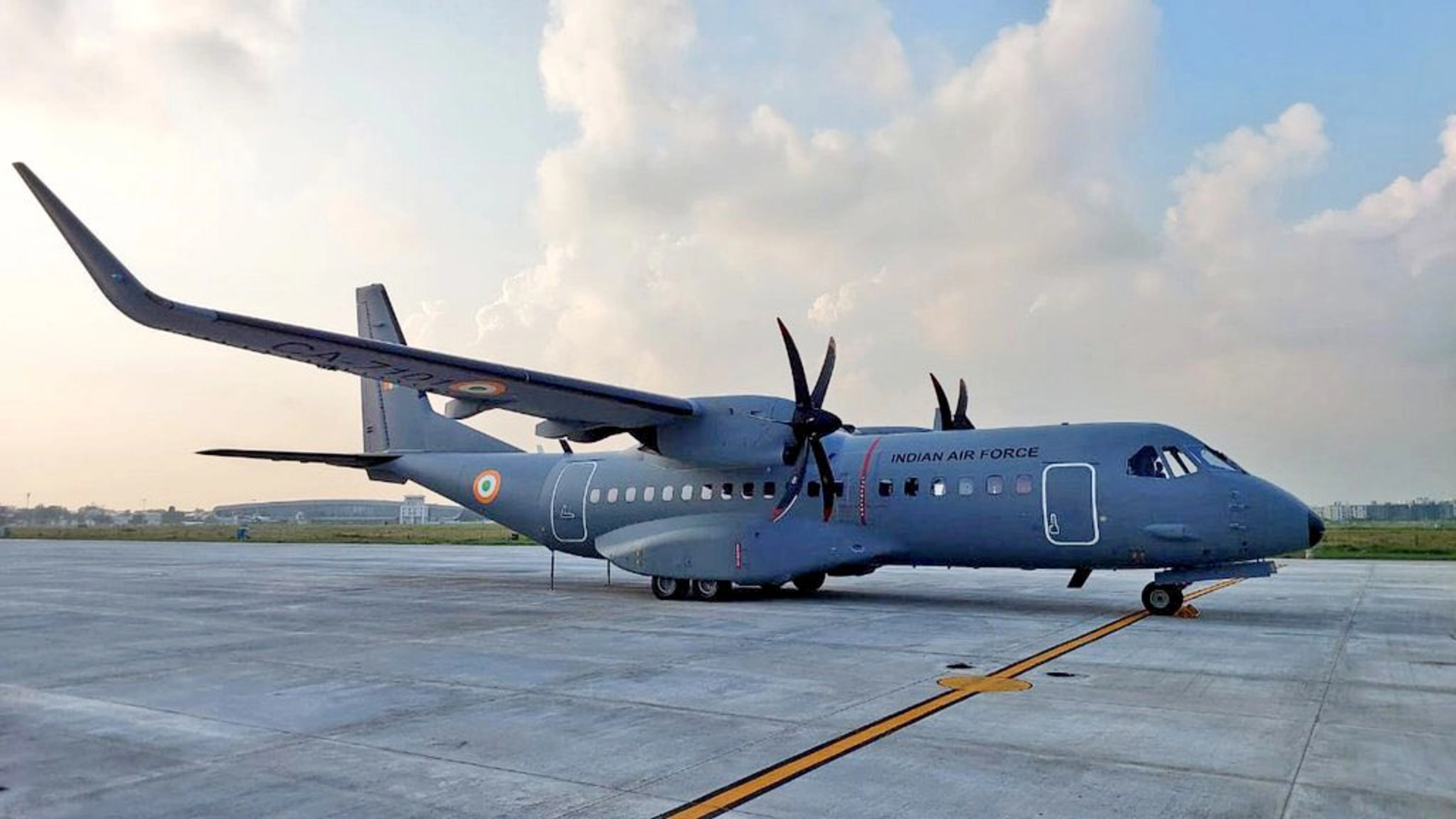Prime Minister Narendra Modi, alongside Spanish Prime Minister Pedro Sanchez, is set to inaugurate the Tata-Airbus C-295 aircraft manufacturing facility in Vadodara, Gujarat, on October 28. This facility, the first of its kind in India’s private sector for military aircraft assembly, represents a landmark collaboration between Airbus and Tata Advanced Systems Limited (TASL) under the “Make in India” initiative. The project is expected to produce the first indigenous C-295 transport aircraft by September 2026, with all 40 Indian-made aircraft projected to be delivered by August 2031. In addition to the 40 aircraft manufactured in India, 16 flyaway models were purchased directly from Airbus, bringing the total fleet to 56 C-295s, a tactical lift aircraft essential for modernizing the Indian Air Force’s (IAF) transport capabilities.
This initiative is a result of the 2021 contract worth approximately Rs 21,935 crore ($2.9 billion), a critical investment aimed at replacing the IAF‘s aging Avro-748 fleet, which has served since the 1960s. The IAF has already inducted six of the flyaway models into its 11 Squadron, stationed in Vadodara, with the remaining flyaway units to be delivered by 2025. The Vadodara facility’s production will primarily cater to IAF needs, but future orders may serve the Indian Navy and Coast Guard, expanding the platform’s role in India’s defence ecosystem.
Designed for versatility, the C-295 has a load capacity of 5-10 tonnes, accommodating up to 71 troops or 50 paratroopers. Its rear ramp provides flexibility for loading equipment or airdropping supplies, making it suitable for operations in mountainous terrains and other challenging environments. Beyond its transport roles, it can also support humanitarian and disaster relief missions, enhancing India’s ability to respond to emergencies swiftly.
A significant component of this project is the focus on increasing indigenous production. By 2030, the indigenous content in the aircraft is projected to reach 78%, marking a substantial step towards self-reliance in aerospace manufacturing. This focus on localization includes sourcing 13,000 of the 14,000 parts needed for each aircraft within India, with 37 local suppliers, many of which are small and medium-sized enterprises. Airbus has partnered with Indian defense firms Bharat Electronics Limited (BEL) and Bharat Dynamics Limited (BDL) to develop an Electronic Warfare Suite that will be integrated into each aircraft.
The facility is also expected to create over 6,000 jobs, including 600 direct positions and thousands more through its supplier network, creating an estimated 42.5 lakh man-hours of work. According to Air Marshal Sanjeev Kapoor (Retd), this project not only strengthens India’s defense capabilities but also fosters a robust ecosystem for aerospace manufacturing within the private sector.
In addition to producing the C-295, the facility is expected to establish a Full Mission Simulator at the IAF’s Agra base, allowing for advanced training. This aspect of the project ensures the IAF will have continuous access to training resources, thereby enhancing mission readiness and skill development.
Also read: Gujarat Launches Barda Wildlife Safari To Boost Tourism, Online Booking Options Available
The collaboration between India and Spain is viewed as an essential step in advancing India’s defence manufacturing sector, boosting national capabilities, and reducing dependency on foreign Original Equipment Manufacturers (OEMs). The facility’s inauguration is seen as a milestone in the India-Spain strategic partnership, highlighting Spain’s commitment to India’s defense aspirations and collaborative industrial growth.





















